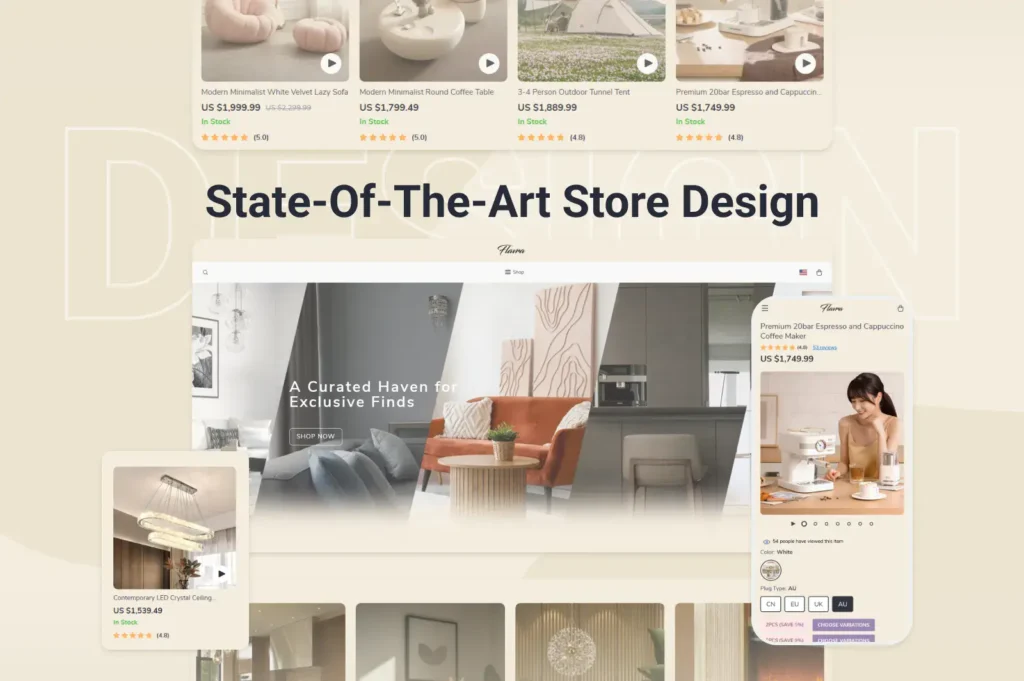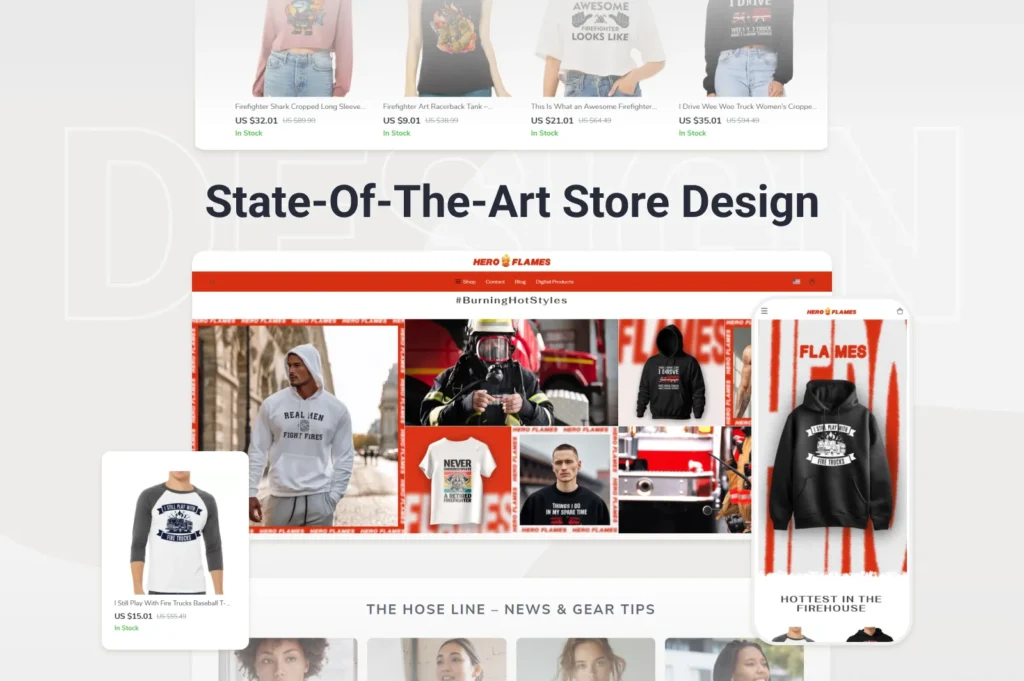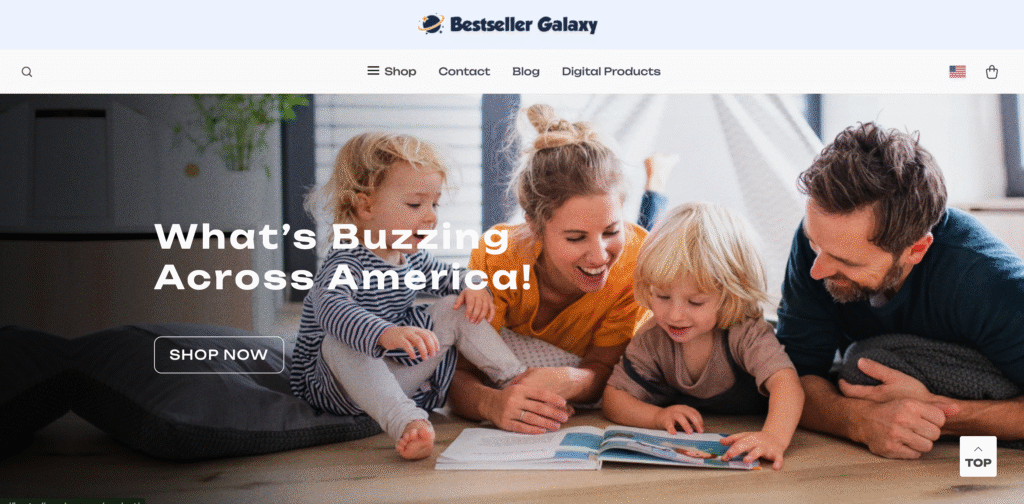According to the Global Entrepreneurship Monitor (GEM) 2024–2025 United States Report, Total Entrepreneurial Activity (TEA) is back at 19 %, the same record level we saw just two years ago. In other words, nearly one in five working-age Americans is either launching a new business or running one that’s just getting started. That’s a clear sign the entrepreneurial spirit is alive and well.
If you’ve been waiting for the “right moment” to take the leap — this could be it. More people are trying new ideas, customers are eager to discover fresh products, and investors are actively looking for the next big thing.
Of course, getting started is still the hardest part. Setting up a website, sourcing products, and taking care of legal details can take months. That’s where Offiro comes in. Every shop on our platform is pre-vetted and fully set up, so you can skip the slow, stressful early stage and focus on what matters most — growing your business.
Big Tax Changes in 2025: What the New Law Means for You

Running an online store just got a little easier at least when it comes to taxes. The “One Big Beautiful Bill Act” (OBBBA), passed in mid-2025, introduced some of the biggest small-business tax updates in years. These changes are already in effect, which means that if you own or buy an online store today — including those purchased through Offiro — you can take advantage of them right away. That means bigger write-offs, faster deductions, and better cash flow to reinvest in marketing or inventory.
Here’s what matters most for eCommerce owners, with examples to show the impact:
100% Bonus Depreciation Is Back
You can now deduct the full cost of qualifying equipment, software, or tech tools in the year you buy them.
Before:
You bought $10,000 worth of laptops and cameras for your e-commerce operations. You had to spread the deduction over five years, writing off only $2,000 each year.
Now:
You deduct the entire $10,000 this year and lower your taxable income right away.
Bigger Section 179 Deduction
The limit for immediate expensing under Section 179 is now $2.5 million ( with a higher phase-out limit of $4 million).
Before:
You invested $50,000 into warehouse shelves, packaging machines, and new order-management software, but some of it exceeded the old cap — forcing you to depreciate part of it over several years.
Now:
You can write off all $50,000 in the same tax year, cutting your tax bill and letting you reinvest faster.
Immediate Deduction of Research & Development Costs
If you’re developing new products or testing new sales channels, you can now deduct those costs right away.
Before:
You spent $30,000 testing a new private-label product line and split-testing marketing campaigns, but could only deduct $6,000 per year for the next five years.
Now:
You deduct the full $30,000 this year, reducing your tax bill and giving you more budget to scale up if the test works.
More Generous Business Interest Deductions
If you finance growth with a loan or line of credit, you can now deduct more of the interest you pay.
Before:
You borrowed $100,000 to buy bulk inventory and paid $7,000 in interest, but only part of it was deductible under old rules.
Now:
You can deduct a larger portion (sometimes all) of that $7,000, making inventory financing more affordable and easier to justify.
Permanent Credit for Paid Family and Medical Leave
If you have employees helping you run your store, offering paid leave now comes with a predictable tax credit every year.
Before:
You offered an employee paid sick leave or parental leave but weren’t sure if you’d still qualify for the credit next year.
Now:
You can claim this credit every year, making it easier to offer competitive benefits and keep good employees.
Together, these updates mean better cash flow and faster growth for online store owners. If you buy a pre-vetted shop through Offiro, you can take advantage of these benefits immediately without waiting and without complicated setup.
What’s Happening in eCommerce in 2025
The U.S. eCommerce market is still expanding, just not at the pace we saw during the pandemic years. For online store owners, this means you have a growing audience to sell to, but you’ll also face a more competitive landscape. Smart positioning, product selection, and efficient operations are what will set you apart.
Current Growth Trends & Benchmarks
According to the latest data from the U.S. Census Bureau, eCommerce remains one of the strongest parts of retail:
- U.S. eCommerce sales reached $304.2 billion in Q2 2025, a 5.3 % year-over-year increase.
What this means: Customers are still buying online in record numbers. While the growth rate is slower than in 2020–2022, the base is much bigger now — so that 5.3 % represents billions in new spending opportunities for online sellers.
- eCommerce accounts for 16.3 % of all U.S. retail sales.
What this means: Nearly one in six dollars spent on retail now goes through online channels. If you don’t have an eCommerce presence yet, you’re missing a significant share of the market.
- Growth is slowing compared to previous years — 5.3 % year over year is the slowest pace since late 2022.
What this means: The easy “everyone’s buying online now” growth phase is over. You’ll need a strategy to win customers — niche products, strong branding, and smart ad targeting are no longer optional.
- Forecasts remain positive despite economic headwinds. Even after tariff and supply chain adjustments, analysts still project around 5 % eCommerce growth for 2025.
What this means: While there’s pressure on costs, demand is not going away. Consumers are used to buying online — it’s now a permanent part of retail.
In short, the eCommerce market is still growing, but the competition is catching up. This is your cue to think like a professional from day one and focus on branding, product quality, and customer experience so that your store stands out.
Entrepreneur Confidence & Sentiment
Entrepreneur optimism is keeping the market active. The EY Entrepreneur Ecosystem Barometer (April 2025) shows that 95 % of entrepreneurs expect success in revenue, profit, or market share over the next 12 months.
At the same time, 43 % say the economy is still hurting their business, pointing to rising ad costs, shipping fees, and inflation as main concerns.
The U.S. Chamber of Commerce Small Business Index backs this up, with confidence rising to 72.0 in Q3 2025, the highest level in more than a year. More owners plan to expand, hire, and invest — creating a vibrant ( but competitive) environment for new online stores.
Niches & Consumer Behavior to Watch
Slower overall growth doesn’t mean every category is flat. In fact, Digital Commerce 360’s category analysis shows that some segments — like health & wellness, pet products, and hobby-focused items — are growing faster than the overall market.
- Specialized stores are outperforming generalists. Consumers prefer shops that solve a specific problem or focus on a niche they care about
- Social media drives discovery. A 2025 HubSpot consumer trends report found that 56 % of Gen Z and 46 % of Millennials discover new products through TikTok or Instagram before purchasing
- AI adoption is accelerating. Research from MIT & OpenAI (2025) shows that early AI adopters in small businesses see up to a 12 % increase in productivity.
What This Means for You
The message is clear: the opportunity is there, but you need to approach it strategically.
- Focus on a clear niche to cut through the noise
- Be present where your customers are — social platforms, marketplaces, and search
- Leverage automation and AI early to save time and improve conversions
- Build a financial buffer — costs can rise unexpectedly, and a strong cash position keeps you in the game
By understanding these trends and aligning your strategy, you can position your store to grow even in a market that’s becoming more competitive and sophisticated.
Digital Tools, AI, and Automation: Your Competitive Edge in 2025

Running an online store today is all about using the right tools to stay efficient. In 2025, entrepreneurs who embrace automation and AI early are seeing real results: lower costs, better customer experiences, and faster growth.
AI Adoption Is Growing Fast
AI is no longer just for tech giants — it’s now affordable and accessible for small businesses.
- MIT & OpenAI research (2025) found that small businesses using AI tools saw a 12 % productivity boost compared to those who didn’t
What this means: Even basic AI adoption — like using chatbots, automated ad targeting, or AI-written product descriptions — can free up hours each week and help you scale faster.
- HubSpot’s 2025 Consumer Trends Report shows that shoppers expect personalized recommendations and fast responses — both areas where AI tools excel
Before:
You manually wrote every product description, answered every customer email, and ran ad campaigns by guesswork.
Now:
You use AI to generate polished product copy in minutes, let a chatbot handle common customer questions 24/7, and run ad campaigns that automatically optimize toward the best-performing audiences.
Automation Saves Time and Cuts Costs
Beyond AI, automation is key to running a lean and profitable store:
- Order management: Connect your store to fulfillment services that automatically update inventory and send tracking numbers to customers
- Marketing: Schedule email campaigns, abandoned cart reminders, and social posts in advance — no more last-minute scrambling
- Analytics: Use dashboards that track conversions, top products, and ad ROI automatically, so you can make decisions faster
Before:
You had to check inventory manually, message suppliers when stock was low, and pull sales reports into spreadsheets every week.
Now:
Your store updates inventory in real time, sends alerts if items are running low, and gives you a live dashboard of your sales performance saving you hours every month.
How Offiro Helps You Get There
Every store listed on Offiro comes with a strong technical foundation — meaning you can start using advanced tools on day one:
- Built- in integrations with fulfillment and payment systems
- Ready-to-use dashboards for product performance and trends
- Compatibility with leading AI-powered apps for marketing and support
This means you skip the trial-and-error phase of figuring out what software stack to use — and can focus on growing sales from the start.
Conclusion: Make 2025 the Year You Launch

2025 is shaping up to be one of the best years in recent history to start an online store. Entrepreneurial activity is at a record high, eCommerce keeps growing, and new tax rules are already helping business owners keep more of their money to reinvest in growth. Yes, competition is rising — but with the right tools, a smart funding plan, and a clear niche, you can turn these market conditions into an advantage.
Remember: starting from scratch is the hardest part. That’s why Offiro’s pre-vetted stores are designed to give you a head start. You get a fully operational store with optimized suppliers, built- in analytics, and the ability to plug in AI tools and automation right away — so you can focus on scaling, not setting up.
Ready to take the first step? Contact our experts today to find the perfect store for you and start 2025 with a business that’s ready to grow.
















